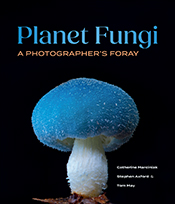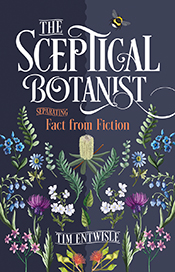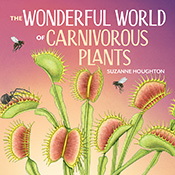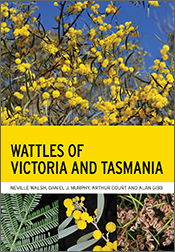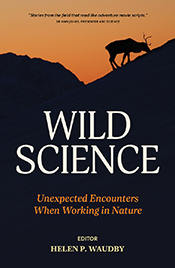Reducing the Impacts of Development on Wildlife

By: James Gleeson, Deborah Gleeson
Practical measures to reduce the impacts on wildlife and promote ecologically sustainable development.
The rapidly increasing number of threatened flora and fauna species worldwide is one of the chief problems confronting environmental professionals today. This problem is largely due to the impact humans have had on land use through development (e.g. agricultural, residential, industrial, infrastructure and mining developments). + Full description
The requirement for developers to implement measures to reduce the impacts of development on wildlife is underpinned by government legislation. A variety of measures or strategies are available to reduce such impacts, including those to reduce impacts on flora and fauna during land clearance, to deter fauna from potential hazards, to facilitate the movement of fauna around and through a development site as well as those to provide additional habitat. In recent years, considerable advances have been made in the techniques used to reduce the impacts of development on wildlife in Australia and overseas.
Reducing the Impacts of Development on Wildlife contains a comprehensive range of practical measures to assist others to reduce the impacts resulting from development on terrestrial flora and fauna, and promotes ecologically sustainable development. It will be very useful to environmental consultants and managers, developers, strategists, policy makers and regulators, as well as community environmental groups and students.
2012 Whitley Award Commendation for Zoological Text.
- Short descriptionNews
This title is no longer available in print format, but can still be purchased as an eBook.
Reviews
"The authors claim this book is the first of its kind in Australia. We agree whole-heartedly. For once, the blurb on the back cover is right: for ecologists, consultants, developers – and we would add, environmental activists – 'if your copy is not dog-eared and well worn, you are probably not doing your job properly!'
Dr Darryl Jones & Amy Bond, Wildlife Australia, pp3 43-44, Autumn 2013
"If nothing else, this book demonstrates why detailed professional ecological investigations should be undertaken for all developments potentially impacting on natural ecosystems. Understanding what is on a site and individual species' requirements is essential for determining future land uses, designing development projects and managing consequential impacts."
Consulting Ecology, Newsletter of the Ecological Consultants Association of NSW, pp. 7, Volume 29, 2013
"This book is clearly written and presented. It is structured so that it can be easily used as a reference book, or read from cover to cover. It is well supported with examples, case studies, colour photographs and diagrams... A much needed resource!"
Selga Harrington, Australasian Plant Conservation, pp. 30, Vol 21, 2012
"The book’s readability is improved by the generous use of photos and illustrations, as well as by many boxed case studies of first-hand experiences at Australian development sites.
In the words of an environmental consultant friend: 'I wish we'd had this years ago.'"
Nicola Markus, ECOS online, November 2012
"Written in a 'how to' style, this book does exactly what is says on the cover. The practical and accessible nature of this book will be an ideal resource - the copies are on order for library and I think they will be much thumbed by students."
Sarah Taylor, Bulletin of the British Ecological Society, pp. 76, Vol 43 (4), 2012
"Ambitious in scope, the book is structured in a way that makes the subject easy to follow and relevant to a wide audience.
The next time you see a dead native animal on the road, remember that adverse impacts of developments on wildlife can be mitigated, and that a resource is available to help achieve this."
Martin Fallding, Australasian Journal of Environmental Management, pp. 1-2, December 2012
"The text is clear and easy to read, fully referenced and well supported with photos, tables and charts. For anyone wanting a better understanding of processes for reducing our impact on wildlife this book will be very welcome."
RG Richardson, Plant Protection Quarterly, Vol 27 (1), pp. 44, 2012
"This book contains a comprehensive range of practical measures to assist others to reduce the impacts resulting from development on terrestrial flora and fauna, and promotes ecologically sustainable development."
Landcare Queensland, April 2012
"This well-researched book provides an excellent basis for approaching and solving problems associated with impact assessment and mitigation. It gives an overview of techniques and solutions with the objectives of conservation of wildlife that can be applied to most projects. Such a practical book is a 'must-read' for every environmental manager, particularly those involved in consulting and local government."
Dr Martin Denny, Fellow of the Royal Zoological Society of NSW, Past-president of the Ecological Consultants Association of NSW
"This book should not be on the shelf of every ecologist, consultant or developer – it needs to lie open on their desk, sit at the top of their field bag and be widely discussed around the lunch-room table. Indeed – if your copy is not dog-eared and well-worn, you are clearly not doing your job properly! The book is well-written, clearly laid out and provides a huge array of practical strategies and techniques to mitigate the effects of developments on wildlife."
Dr Rodney van der Ree, Deputy Director of the Australian Research Centre for Urban Ecology, Royal Botanic Gardens Melbourne
"This book deserves a place on the bookshelves of Australian planners everywhere."
Peter J. Herborn, Australian Planner, 22 May 2013
Details
ePDF | April 2012ISBN: 9780643106932
Publisher: CSIRO Publishing
Available from eRetailers
ePUB | April 2012
ISBN: 9780643106949
Publisher: CSIRO Publishing
Available from eRetailers
Features
- An overview of the nature and extent of the impacts of development on wildlife.
- The importance of understanding population and behavioural ecology as a pre-requisite for implementing impact mitigation measures.
- Descriptions of a wide range of measures that have been used to help wildlife survive developments.
- Photographs and diagrams to visually describe the measures.
- Explanations of how the measures are intended to work.
- Examples of projects that have incorporated such measures.
- A review of existing scientific and government literature to determine the effectiveness of the measures.
- An indication of which measures are commonly available commercially.
- Case studies involving more complex measures (e.g. fauna overpasses).
- An approximation of the costs of commonly commercially available measures.
Contents
1 Introduction2 Potential impacts of development on flora and fauna
3 Selecting measures to reduce impacts of development on wildlife – why an understanding of ecology is fundamental
4 Avoiding impacts on flora and fauna
5 Modifying human behaviour to reduce impacts of development on flora and fauna
6 Measures to reduce direct fauna and flora mortality during land clearance
7 Measures to exclude or deter fauna from a development site
8 Measures to promote safe movement of fauna around and through a development site
9 Measures to minimise habitat degradation near a development site
10 Measures to provide additional habitat for flora and fauna impacted by development
11 Ex situ measures for conservation of flora and fauna
12 Environmental offsets
13 Monitoring
14 Adaptive management
15 Concluding remarks
View the full table of contents (PDF).
Authors
James Gleeson has a background in ecological research, consulting and management. He has spent the past decade working for some of the largest mining and infrastructure projects around Australia. James works alongside some of Australia’s leading botanists, zoologists and ecologists to develop measures to overcome disparities between development and conservation of biodiversity. James received his Bachelor of Science with Honours from the University of Queensland.
Deborah Gleeson has specialised in fauna and flora for over a decade, during which time she gained a PhD in ecology and evolutionary biology, and worked as a field ecologist and ecological project manager for environmental consulting companies, among other roles. Deborah has played a key role in recommending measures to reduce impacts on flora and fauna for a variety of residential, commercial, industrial, infrastructure and mining developments. Deborah is an Honorary Fellow at Griffith University School of Environment.
Contributors:
Darryl Jones is the Deputy Director of the Environmental Futures Centre at Griffith University.
David Goldney is an Adjunct Professor at Charles Sturt University and the University of Sydney, as well as the Principal Consulting Ecologist for Cenwest Environmental Services.
Allen Kearns has been with CSIRO since 1995, where he has held the position of Deputy Chief of Sustainable Ecosystems, among other roles.
Aaron Organ is the Director/Principal Ecologist at Ecology and Heritage Partners.
Andrew Hamer is an ecologist at the Australian Research Centre for Urban Ecology (ARCUE) at the Royal Botanic Gardens Melbourne.



